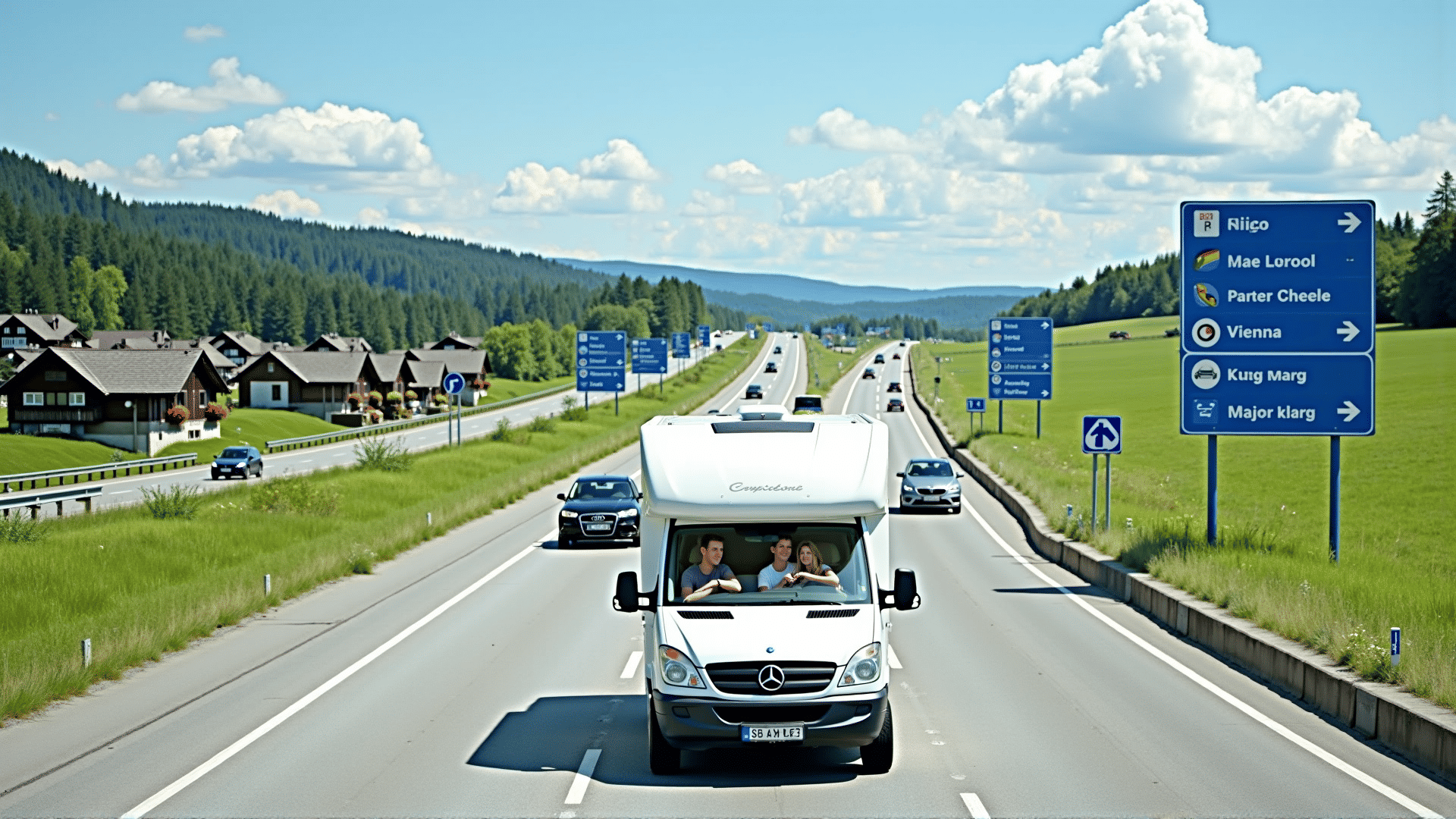Navigating Austria's picturesque landscapes and vibrant cities is a rewarding experience, made even more enjoyable with a solid understanding of the country's road network and transport systems. Whether you're driving through the Alps or exploring urban centers, these tips will help you travel efficiently and safely across Austria.
Understanding the Road Network
Major Highways and Roads: Austria boasts a well-maintained network of highways, known as "Autobahnen" (marked with an 'A'), and expressways called "Schnellstraßen" (marked with an 'S'). These routes connect major cities like Vienna, Salzburg, and Innsbruck, facilitating fast and direct travel across the country. The A1 Westautobahn, for example, is a key corridor linking Vienna to Salzburg and beyond.
Toll Systems: Driving on Austrian highways requires a vignette, a toll sticker that must be affixed to your vehicle's windshield. Available in 10-day, 2-month, or annual options, these can be purchased at border crossings, gas stations, and online. Additionally, some routes, like the Tauerntunnel and Arlberg Tunnel, have extra tolls.
Navigating Urban Areas
City Travel: Navigating cities such as Vienna and Graz is made easy with efficient public transport systems. Vienna, for example, offers an extensive network of trams, buses, and the U-Bahn, providing affordable and fast alternatives to driving. When driving in urban areas, be mindful of pedestrian zones and one-way streets, which are common in city centers.
Parking: Parking in Austrian cities often requires a permit or parking ticket, especially in designated short-term parking zones called "Kurzparkzonen." It's important to look for signs indicating restrictions and to use the ticket vending machines to avoid fines.
Seasonal Travel Tips
Winter Driving: The winter months bring snowy conditions, particularly in mountainous regions. Austrian law mandates the use of winter tires, usually from November 1st to April 15th. Carrying snow chains is also advisable when heading to ski resorts or remote areas.
Summer Vacations: Summer in Austria can draw considerable tourist traffic, especially in popular regions like Tyrol and Carinthia. Planning your travel during off-peak times can help you avoid congestion. Additionally, take advantage of Austria's scenic routes such as the Grossglockner High Alpine Road for breathtaking views and a memorable drive.
Sustainable Travel Options
Public Transport: Austria's public transportation system is renowned for its reliability and coverage. Consider using the efficient and eco-friendly OBB trains for long-distance travel. For regional journeys, buses and local trains are excellent options.
Cycling: For the environmentally conscious, Austria offers extensive cycling routes. Cities like Vienna have well-marked bike lanes, and regions like the Danube Valley provide picturesque paths for exploring at a leisurely pace.
Practical Advice
Navigation Tools: Leverage GPS systems and mobile apps like Google Maps for real-time traffic updates and alternate route suggestions. These tools are invaluable for finding the best routes and avoiding delays.
Emergency Numbers: Keep essential contact numbers handy, such as 112 for emergencies, 133 for police, and 122 for fire services. Having this information readily available ensures you can get assistance if needed.
By understanding Austria's transport options and road networks, you can explore this beautiful country with confidence. Whether you're taking a serene drive through the countryside or commuting in bustling cities, these tips will enhance your travel experience, making your Austrian adventure both efficient and enjoyable. Safe travels!
